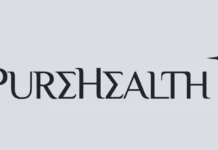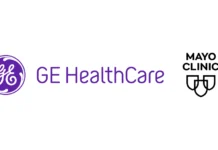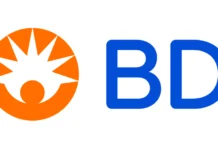As per the SNS insider, the global infection control market was valued at almost $235 billion in 2023. It is anticipated to reach around $415 billion by 2032, thereby expanding at a CAGR of almost 7% during the focus period of 2024 to 2032.
A growth in healthcare-associated infections (HAIs), fast expansion of medical infrastructure, and rising surgical volumes with a strong focus on public health as well as hygiene specifically followed after COVID-19 are indeed the forces behind this kind of progress. Moreover, driving the growth of the market is the growing knowledge when it comes to disinfection along with sterilization’s importance, in addition to the stringent regulations for these purposes across different areas.
The infection control market trends in the US
In the United States, the infection control market is showing very robust growth, with the market value increasing from $59 billion in 2023. To almost $103 billion by 2032, thereby registering a CAGR of almost 6.32%.
Because of the advanced healthcare system, great funding within hospital infrastructure, as well as stringent infection control needs by organizations such as the CDC and OSHA, the US has gone on to hold a significant share of the global market in 2023. Bolstering further the US industry is the consistent study on antibiotic resistance as well as more financing when it comes to initiatives that are aimed at preventing infections.
Growing surgical procedures, new pathogens, and antibiotic-resistant strains are altering the scene of infection management across the world. According to the WHO estimates, 10 in developing countries will get a minimum of one healthcare-associated infection, or at least seven out of a hundred hospitalized patients. Funding in terms of systems of infection surveillance along with prevention is indeed being raised by the government as well as international health organizations. Moreover, driving the market growth when it comes to efficient infection control technologies and practices are the growing healthcare access within developing countries as well as the fast urbanization.
Although the aging population across the world is increasing, the susceptibility to infections thereby driving the demand, the growth of minimally invasive operations, cosmetic treatments, and dental procedures has gone on to result in a dramatic growth when it comes to sterilizing requirements.
Segment analysis
By way of category
By having almost 63% of the infection control market share, the consumables segment went on to dominate the market in 2023. This segment has in it the sterilizing wraps, masks, gloves, surgical drapes, disinfectants, and also ambulatory clinics. The major factors that drive the leading share of these items include the high turnover rate as well as repeated use when it comes to hospitals along with ambulatory clinics.
It is well to be noted that consumables have become very critical tools for avoiding cross-contamination due to the fact that there has been a growing worldwide focus on hygiene, specifically due to the COVID-19 pandemic.
Besides this, the changing rules from healthcare organizations now happen to suggest more regular alterations of protective gear as well as disinfectants, which would drive the demand as they reflect more modern ideas. Apart from this, manufacturers are also developing environmentally friendly as well as more powerful consumables, hence promoting the market expansion.
It is well to be noted that consumables are also very essential in outpatient care, emergency response environments, and long-term facilities when there are quick and throwaway infection control measures that are required. Public along with commercial healthcare providers often give this category a great amount of attention because demand in this sector makes sure of a consistent income generation.
By way of end user
Having almost 52% of the global infection control market share, the hospital segment has gone on to dominate the market in 2023.
Due to the complicated patient situations that they treat, which obviously include invasive surgeries, high-risk exposures, and ICU treatments, hospitals go on to demand the best degree of infection control. Rising hospital admissions, specifically in the case of intensive care units along with surgical cases, demand an in-depth sanitation along with infection procedures. Stringent infection control policies They are now very necessary for hospital-acquired infections (HAIs), such as ventilator-associated pneumonia or bloodstream infections.
Infection control compliance now happens to be a primary focus when it comes to government obligations like centers for Medicare and Medicaid Services (CMS) reimbursement standards within the United States, along with equivalent rules across Europe as well as Asia. These specifications have gone on to drive the hospitals in order to make investments in antimicrobial surfaces, modern sterilizing technology, and UV disinfection robots. The growing acceptance when it comes to artificial intelligence as well as digital surveillance systems for infection tracking within the hospitals is most likely to further increase the growth of this particular segment all through the forecast period.
By way of region
It is worth noting that the North American region is leading the global infection control market by having 39% of the total revenue share in 2023. The well-developed healthcare system of the region, great degree of knowledge among patients as well as healthcare professionals, and sophisticated surgical techniques help to explain this kind of dominance. Under the regulatory agencies like the CDC, Health Canada, and the FDA, the United States and Canada have in-depth infection control procedures that are enforced.
One of the major worries is the rising frequency of antibiotic-resistant infections within the United States, which is driving the hospitals to make large investments in infection control. The rising demand for dependable infection prevention products along with services has pushed the growth in outpatient care and long-term facilities across North America.
Driven by rising healthcare investments across India, China, and Southeast Asia, Asia Pacific is anticipated to grow at the fastest CAGR in the focus period. Factors such as fast urbanization, a rise in surgical operations, and a rising population are likely to have a prominent influence on regional market expansion.


















